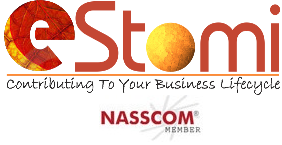The world of business and technology are inextricably linked today. No matter how painful or awkward this process must be, to stay in the competition, every company needs to be able to evolve both its IT capabilities as well as its corporate objectives. To be able to gain optimal value from IT and digital services, ITIL continues to support organizations and individuals to gain optimal value.
Before addressing the role of ITIL in ITSM, let us take a look at the evolution of a traditional IT department. Historically, the main focus of the IT department is to provide computer hardware and software required by organizations. Indeed, in a few cases, the IT departments were sometimes called “IT Shops,” where one could easily “shop” or request software applications, daily reports and even computers, etc without the consumption of much time. If at all, the probably did offer support services to some extend to the organization. As they acquired the necessary technology for their employees to conduct their daily work, the business units became customers of IT. As time passed by, the organizations began to realize that IT could not only provide the aforementioned assets but also assist in automating business processes. When engagement of specialized capabilities is done in such a manner, IT departments are providing services to customers and users. Examples of such services include email, content management, Customer Relationship Management (CRM) and automated accounting services.
ITSM combines people, technology, process and information to deliver the above-mentioned services. ITI is a globally recognized framework which provides comprehensive, practical and proven guidance for establishing an IT service management system. This helps in encouraging consistency and continual improvement for businesses using IT enabled services. The ITIL framework also provides a set of best practices for managing that IT infrastructure in order to deliver quality IT services that are cost-effective. Therefore, customers are able to purchase or fund IT services to assist in achieving their business outcomes. The business outcomes range from acquiring sales and producing products, to providing entertainment and managing finances. With the proper application of ITIL, an organization has the potential to realize a reduction in costs, boost reduction in IT complexity, make an improvement in operational efficiency, have proof of regulatory compliance and perhaps most importantly, have proper alignment of IT services with business processes. The IT department should be providing the services necessary for an organization to meet its goals and objectives. For example, if a business goal is to produce sales, automate the sales process from the beginning to the end. If an organization’s goal is to provide payroll, request IT’s help to automate the process.
For cost effective ITIL Certified Classroom Training, contact us at: +91 7759427731 or mail us at: Connect@eStomi.net
